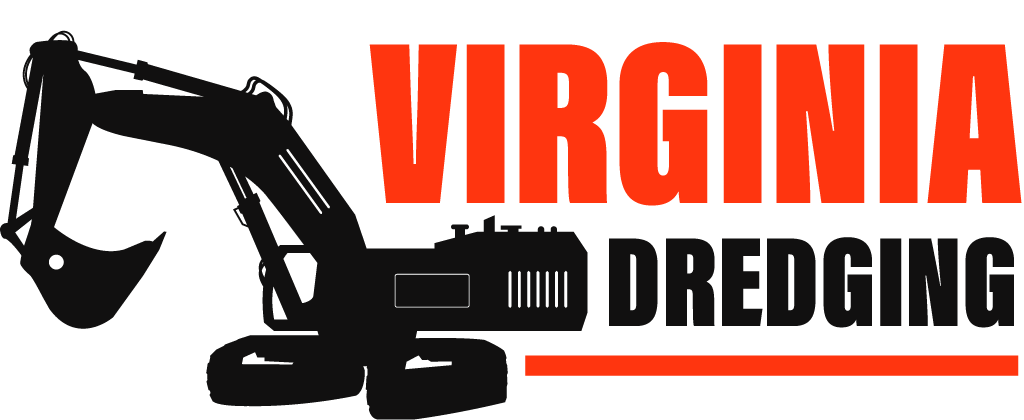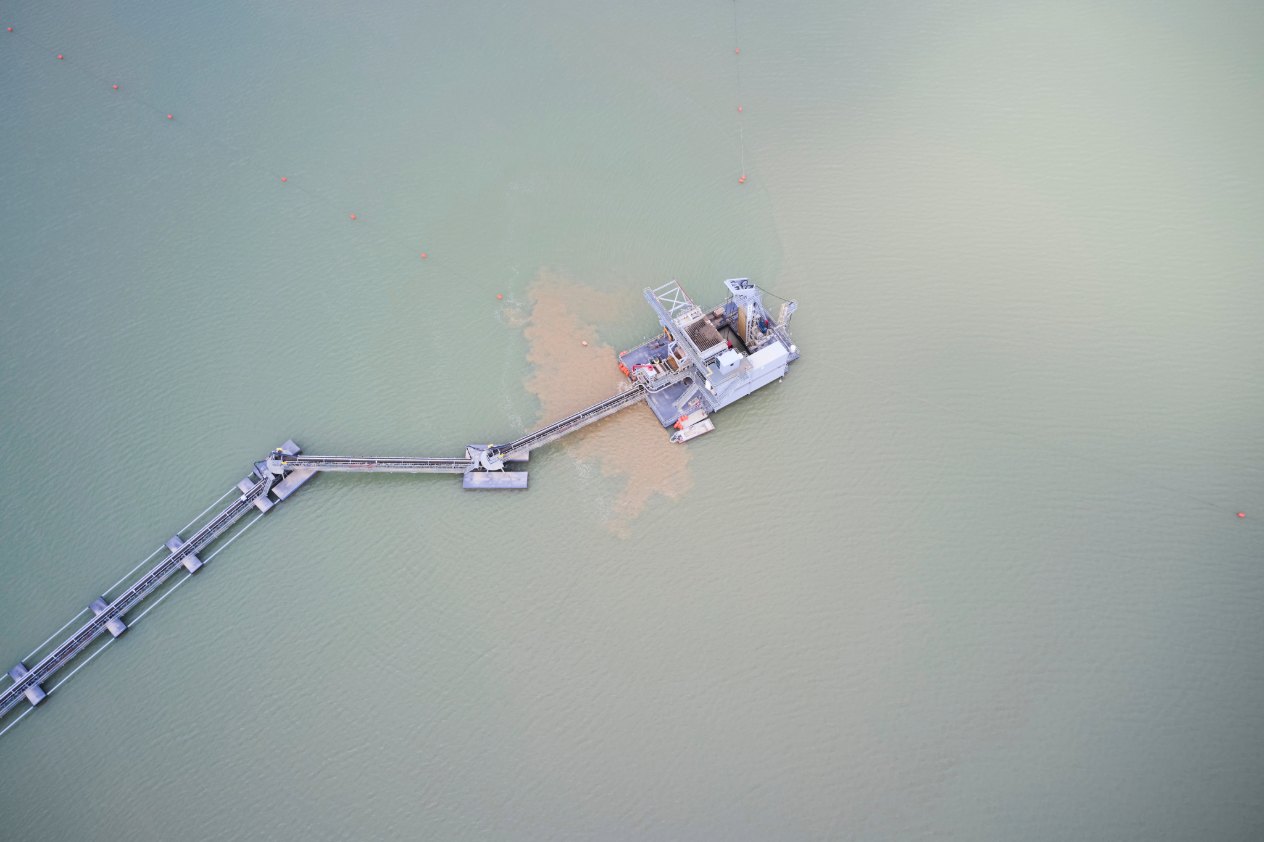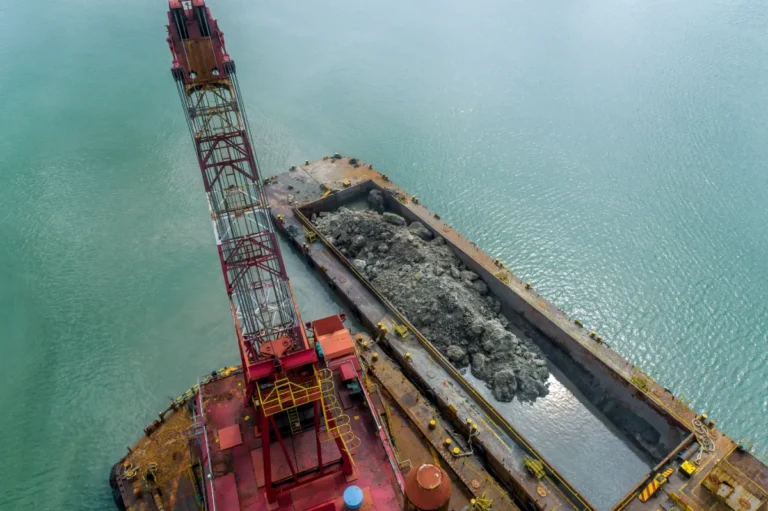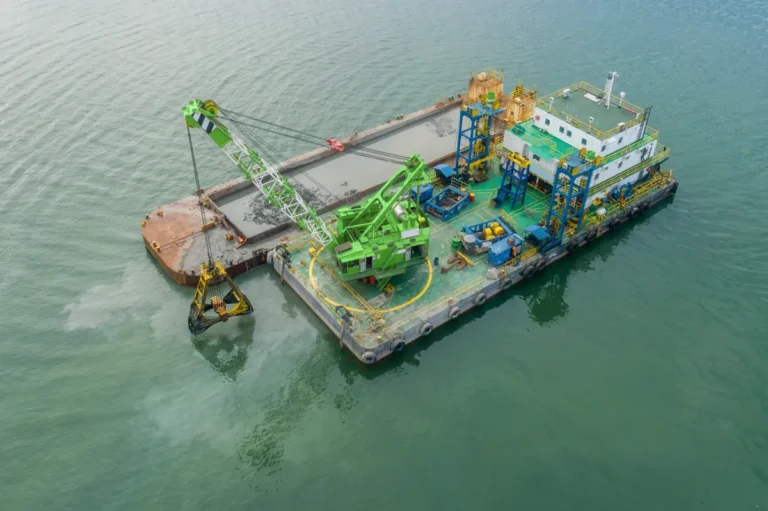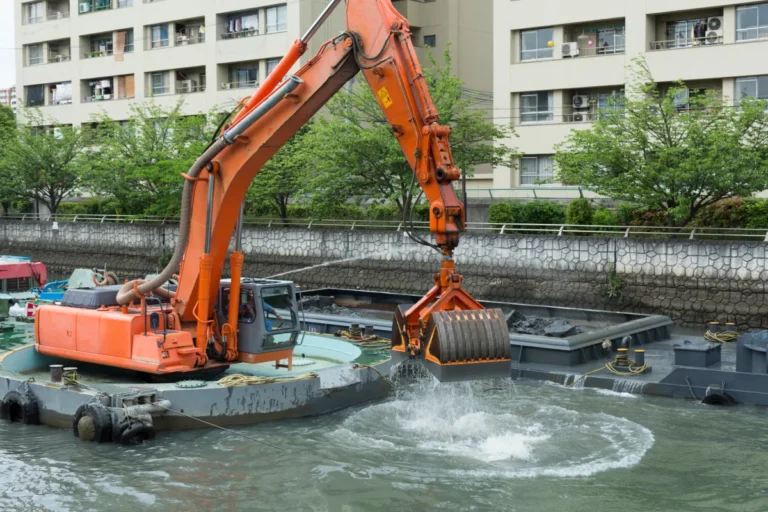In coastal and river-based infrastructure projects, the efficient movement of sand and sediment is critical to maintaining waterways, supporting land reclamation, and mitigating flood risks. A sand dredge pump plays a central role in these operations, enabling the reliable transport of abrasive materials under varying site conditions. However, to achieve optimal performance and minimize downtime, operators must consider several technical, environmental, and operational factors. This article outlines the top considerations for deploying a dredge pump for sand, helping engineers, contractors, and project managers make informed decisions in demanding dredging environments.
Understanding the Role of a Sand Dredge Pump
A sand dredge pump is a specialized type of slurry pump designed to move high concentrations of sand, sediment, and other abrasive materials through pipelines. These pumps are critical components in dredging operations where the goal is to excavate and transport material from underwater surfaces such as rivers, lakes, harbors, or coastal areas.
The primary function of a sand dredge pump is to remove submerged sand and sediment and transport it to a designated discharge point, often for land reclamation, beach nourishment, or sediment management. The pump creates a powerful suction that lifts the material into a pipeline, which is then propelled by centrifugal or hydraulic force over varying distances.
A dredge pump for sand must be engineered to withstand the highly abrasive nature of sand particles. This typically requires durable materials like high-chrome alloys and heavy-duty wear components. Additionally, the pump must maintain high efficiency while handling solids-laden slurry under variable flow and pressure conditions.
Common applications of a sand dredging pump include:
- Riverbed deepening: Removing excess sediment to restore channel depth for navigation or flood mitigation.
- Beach nourishment: Replenishing eroded shorelines by pumping sand from offshore sources back to the beach.
- Harbor maintenance: Clearing accumulated silt and sand to keep shipping lanes and docking areas accessible.
- Flood control: Removing sediment build-up in rivers or drainage systems to improve water flow and reduce flood risks.
In all these applications, the performance and reliability of the sand dredge pump are critical to project success, cost-efficiency, and environmental compliance.
Environmental and Site Assessment
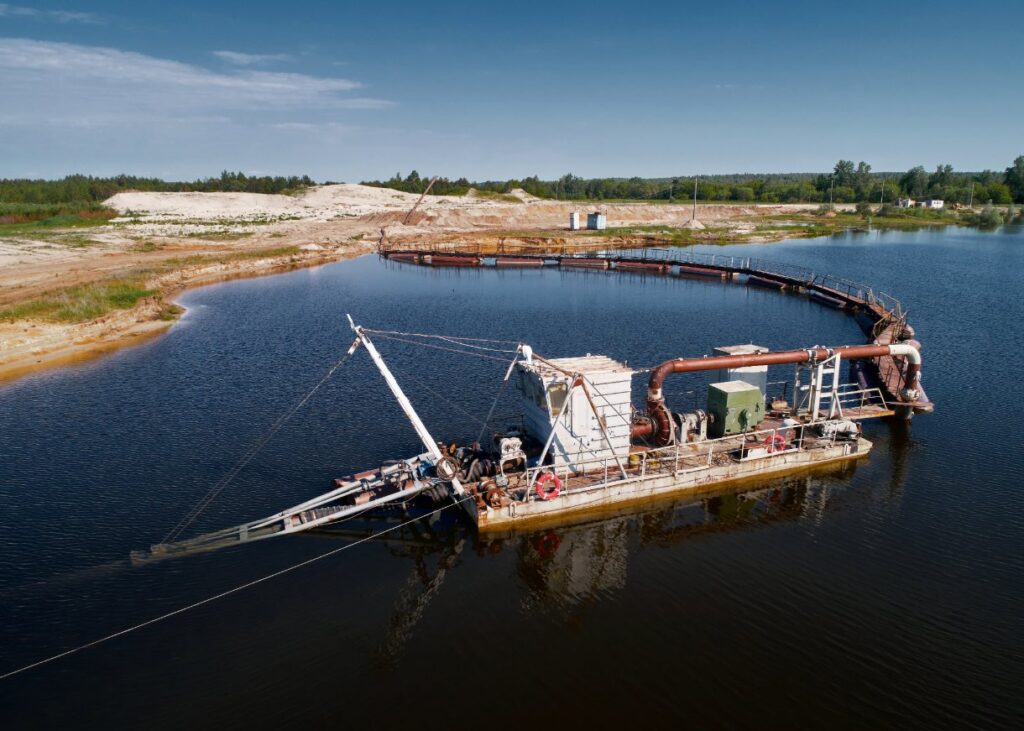
Before deploying a sand dredge pump in coastal or river-based projects, a thorough environmental and site assessment is essential. This ensures the selected equipment is appropriate for the conditions and that operations meet regulatory requirements.
One of the first steps is evaluating the sediment composition. Understanding the ratio of sand, silt, gravel, and debris helps determine the right dredge pump for sand and the wear resistance needed. Pumps operating in high-abrasion environments with coarse sand and gravel must be constructed with durable materials to minimize downtime and component failure.
Tidal conditions and water currents also play a critical role. Strong or shifting currents can affect the stability of floating or submerged dredge systems, as well as the efficiency of slurry transport. The placement and anchoring of the pump, along with pipeline routing, must be planned accordingly to accommodate these dynamic conditions.
Compliance with environmental regulations and local permissions is mandatory for all sand dredging operations. This includes obtaining dredging permits, adhering to sediment disposal guidelines, and implementing turbidity control measures. Regulatory requirements vary by region, so it’s important to work with local authorities to avoid delays or penalties.
Finally, assess access to the dredging site for equipment mobilization and setup. The location must support safe transport and installation of the sand dredging pump, power sources, and pipeline infrastructure. Factors like shoreline stability, launch points for floating platforms, and available staging areas should be evaluated during the planning phase.
Conducting a detailed environmental and site assessment helps ensure that the sand dredge pump performs effectively under project-specific conditions while staying in compliance with local guidelines.
Pump Selection Criteria
Selecting the right sand dredge pump is a critical step in ensuring efficient and reliable dredging operations. The pump must be matched to the specific site conditions, material characteristics, and operational requirements of the project.
1. Choosing the Right Type of Dredge Pump for Sand
Different pump types are suited for different dredging environments. For sand-heavy applications, it’s important to choose a dredge pump for sand that can handle abrasive materials and high solids content without frequent clogging or wear.
- Submersible pumps are placed directly in the dredging area and are ideal for deep or submerged operations with minimal setup.
- Cutterhead pumps are used for compacted or consolidated sand, where mechanical cutting helps break up material before pumping.
- Hydraulic pumps utilize fluid pressure to transport slurry and are common in remote or confined sites.
- Diver-operated pumps offer flexibility for precision dredging in underwater environments with limited access.
2. Sizing the Pump
Proper sizing is essential for effective operation. Factors include:
- Flow rate (GPM or m³/hr) required to meet production targets
- Total dynamic head (TDH), which accounts for vertical lift, friction loss, and pipeline layout
- Solids handling capacity, including maximum particle size and density of the sand
Undersized pumps may cause system inefficiencies, while oversized units can lead to higher energy consumption and wear.
3. Material Construction
Due to the abrasive nature of sand, sand dredge pumps must be constructed from durable materials. Common choices include:
- High-chrome alloys for high wear resistance
- Hardened steel for structural strength
- Specialty coatings or liners that reduce internal erosion and extend component life
The right material selection helps reduce maintenance intervals and improve long-term performance in demanding dredging environments.
4. Drive Type Considerations
The drive system affects portability, efficiency, and power source compatibility:
- Electric drives are ideal for land-based or stationary setups with access to grid power
- Hydraulic drives offer compact power and are frequently used on mobile or underwater equipment
- Diesel drives provide flexibility in remote locations where electric power is unavailable
Choosing the correct drive system ensures that the sand dredging pump performs optimally within the site’s operational constraints.
Power and Discharge Considerations
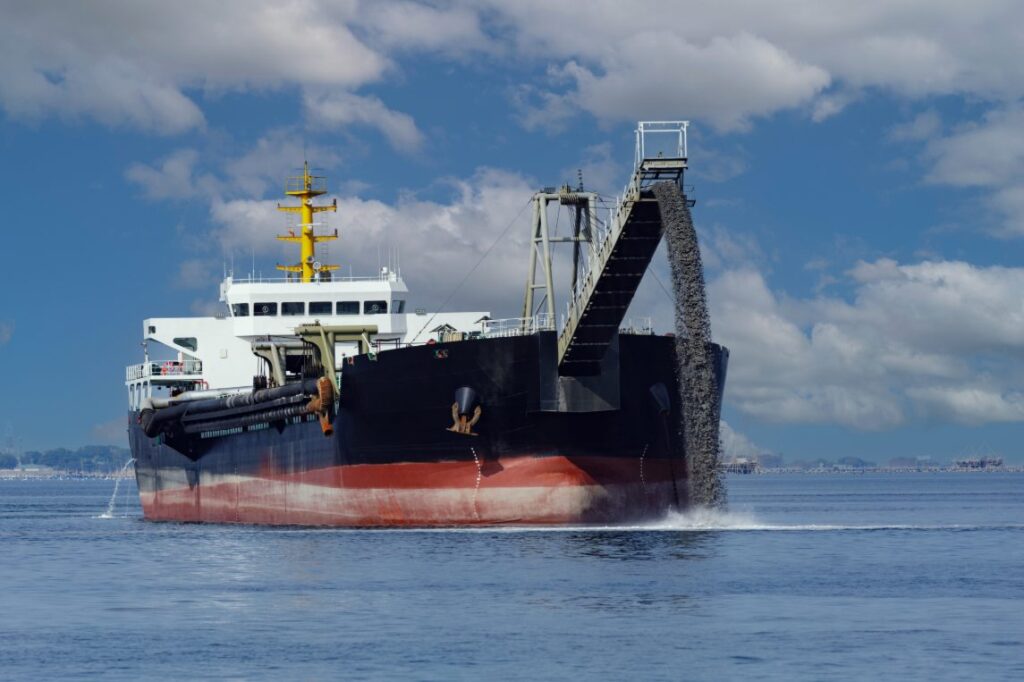
Efficient operation of a sand dredge pump depends on careful planning around power supply and discharge logistics. Both elements significantly impact overall system performance, operational costs, and environmental compliance.
1. Matching the Pump’s Power Source to Site Constraints
The available power source at the dredging site often dictates the type of drive system to be used. Electric motors, hydraulic systems, or diesel engines may power a dredge pump for sand.
- Electric-powered pumps are efficient and ideal for locations with a stable power grid.
- Diesel-driven pumps offer flexibility and are commonly used in remote or mobile operations.
- Hydraulic drives are suitable for compact systems or underwater applications.
Selecting a compatible power source ensures consistent performance and reduces the risk of operational disruptions.
2. Calculating Pipeline Friction Loss and Optimal Discharge Distance
Friction losses in the pipeline system can reduce the effective output of a sand dredging pump. Key variables that affect friction loss include:
- Pipe diameter and length
- Flow rate and slurry velocity
- Pipeline material and number of bends
Engineers must calculate total dynamic head (TDH) to size the pump correctly and to determine whether the system can deliver slurry over the intended distance without performance loss.
3. Booster Pump Requirements for Long-Distance Transport
In cases where sand must be transported over extended distances, a single sand dredge pump may not generate sufficient pressure. Booster pumps can be strategically placed along the pipeline to maintain flow and pressure.
These secondary pumps help:
- Prevent clogging or sedimentation in long pipelines
- Ensure consistent discharge rates
- Reduce mechanical strain on the primary pump
4. Discharge Area Containment and Erosion Control
Managing the discharge area is critical, especially in sensitive environments. High-velocity discharge from a sand dredge pump can cause erosion, water contamination, and sediment runoff. To minimize impact:
- Use containment berms or geotextile bags
- Install diffusers or energy dissipation structures
- Comply with local regulations for sediment disposal
Abrasion and Wear Management
Operating a sand dredge pump in abrasive environments presents ongoing challenges related to wear and tear. Sand, especially when combined with gravel or debris, is highly erosive and can quickly degrade internal components if not managed properly.
1. Common Wear Issues in Sand Dredging Pump Operations
A dredge pump for sand typically faces accelerated wear in areas with high slurry velocity or sharp directional changes. Common wear points include:
- Impellers and volutes
- Pump casing and liners
- Shaft seals and bearings
Excessive wear in these areas can lead to reduced pump efficiency, increased energy consumption, and unplanned downtime.
2. Importance of Regular Inspection and Wear Part Replacement
Routine inspections help identify early signs of erosion and prevent catastrophic failures. Operators should monitor for:
- Drop in flow rate or pressure
- Unusual vibrations or noises
- Visible thinning or cracking in internal surfaces
Scheduled replacement of high-wear parts such as impellers, liners, and seals helps maintain performance and extends the operational life of the sand dredge pump.
3. Strategies to Extend Pump Life
- Flow Velocity Adjustments: Maintaining an optimal slurry velocity reduces excessive turbulence and friction inside the pump. Too low a velocity can lead to settling, while too high a velocity increases wear. Balancing this helps protect internal components.
- Anti-Abrasive Liners: Installing wear-resistant liners made from high-chrome alloy, rubber, or ceramic materials provides a protective barrier against abrasive particles. These liners are often replaceable and cost-effective over time.
- Optimal Impeller Selection: The impeller design must match the characteristics of the slurry. Closed impellers may handle higher pressures, while open or semi-open impellers are better suited for large solids and highly abrasive sand. Choosing the right impeller type improves efficiency and reduces wear.
Maintenance Planning and Downtime Prevention
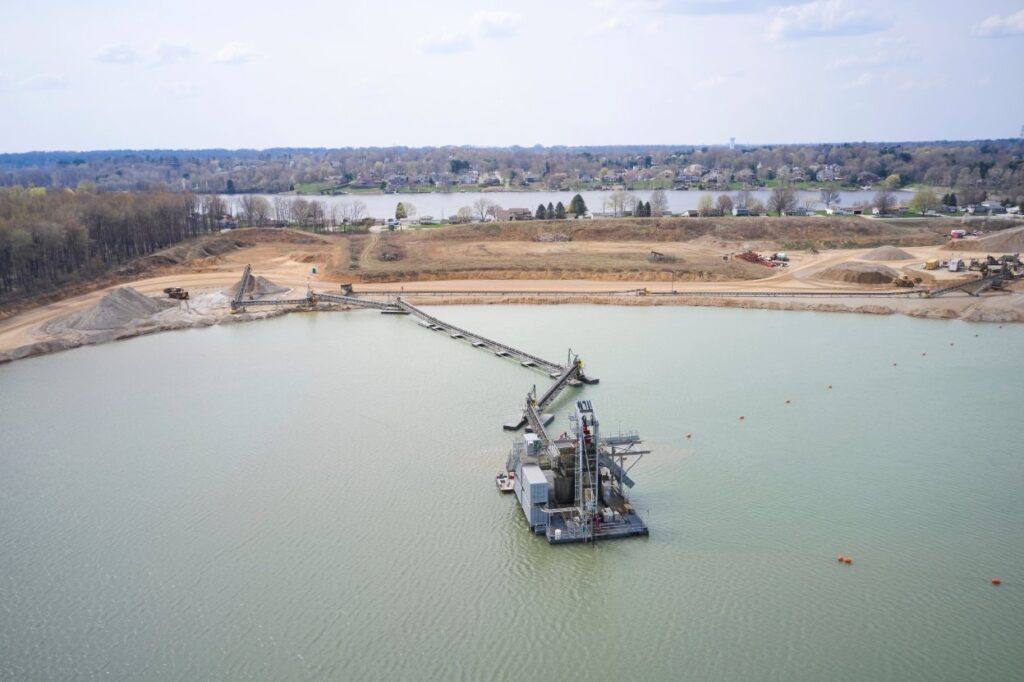
Effective maintenance planning is essential for ensuring the long-term reliability and performance of a sand dredge pump. Given the abrasive nature of sand and sediment, these pumps operate under high mechanical stress and require structured upkeep to avoid unexpected failures.
1. Daily, Weekly, and Monthly Maintenance Checklists
A routine inspection schedule helps identify minor issues before they escalate.
- Daily checks should include monitoring pressure levels, checking for leaks, inspecting seals, and verifying that flow rates are within expected ranges.
- Weekly tasks may involve greasing bearings, cleaning strainers, and checking alignment or belt tension (if applicable).
- Monthly maintenance typically includes a thorough inspection of wear components like impellers and liners, as well as calibration of monitoring instruments.
Implementing checklists for each interval ensures consistency and accountability in the maintenance process.
2. Preventative Maintenance vs. Reactive Repair
A dredge pump for sand experiences faster wear than many other types of pumps, making preventative maintenance far more cost-effective than reactive repair. Preventive maintenance involves replacing parts before failure, based on usage hours or performance data, rather than waiting for a breakdown.
This approach helps minimize downtime, reduces emergency repair costs, and protects surrounding systems from damage caused by pump failure.
3. Stocking Critical Spare Parts (Seals, Impellers, Liners)
To reduce repair time and improve responsiveness, it’s recommended to keep an inventory of high-wear components, such as:
- Mechanical seals
- Impellers (in various sizes, if needed)
- Pump liners and gaskets
Having these parts on-site allows quick replacement and minimizes delays in restoring the sand dredging pump to operational status.
4. Monitoring Vibration, Pressure, and Flow Rate
Installing sensors to track real-time vibration, pressure, and flow data allows early detection of abnormalities.
- Increased vibration may indicate imbalance, misalignment, or component wear.
- A drop in pressure or flow rate could signal internal blockages or impeller damage.e
Operator Training and Safety
Skilled and well-trained personnel are essential for the efficient and safe operation of a sand dredge pump. Dredging environments, particularly along coastlines and rivers, present unique challenges that require a strong understanding of both the equipment and the surrounding conditions.
1. Importance of Skilled Personnel for Dredge Pump Operation
A dredge pump for sand must be operated by individuals who are familiar with its mechanical systems, performance limits, and site-specific variables. Inadequate training can lead to equipment damage, unplanned downtime, or safety incidents. Properly trained operators contribute to higher productivity, lower maintenance costs, and improved operational safety.
2. Key Training Areas
- Pump Startup/Shutdown Procedure:
Operators must follow a defined sequence for starting and shutting down the sand dredging pump to avoid pressure spikes, water hammer, or dry running. This includes system priming, valve checks, and post-operation flushing. - Emergency Handling:
Personnel should be prepared to respond quickly to system failures, leaks, or electrical malfunctions. Emergency drills and clear response protocols are critical to minimizing damage and ensuring crew safety. - Monitoring for Cavitation, Overheating, and Clogging:
Operators should be trained to recognize early warning signs of cavitation, which can erode internal components and reduce pump efficiency. They must also monitor for overheating due to low flow or blocked suction, and safely clear clogs without damaging the pump.
3. On-Site Safety Protocols for Coastal and River Environments
Safety in dredging zones includes both general equipment protocols and environment-specific precautions. These may involve:
- Use of personal protective equipment (PPE)
- Floatation and fall protection near water
- Communication procedures for remote or submerged operations
- Awareness of tidal changes, current shifts, and weather conditions
Automation and Monitoring Technologies
Incorporating automation and monitoring technologies into a sand dredge pump system enhances operational efficiency, reduces unplanned downtime, and improves overall project control. These technologies allow operators to track key performance indicators and respond to issues before they escalate.
1. Benefits of Integrating Remote Monitoring Systems
Remote monitoring enables real-time visibility into pump performance without requiring constant manual oversight. For operations involving a dredge pump for sand, this is especially valuable in remote or hazardous environments. With automation, operators can access data from control rooms or mobile devices, streamlining decision-making and reducing the need for on-site personnel.
2. Flow Meters, Pressure Sensors, and GPS Tracking
- Flow meters measure the volume of sand slurry being pumped, helping to verify production targets and identify inefficiencies.
- Pressure sensors monitor inlet and discharge pressures, ensuring the sand dredging pump is operating within safe parameters. Abnormal readings may indicate clogging, pipeline leaks, or cavitation.
- GPS tracking provides real-time location data, particularly useful for mobile dredging platforms or barge-mounted systems. It supports precise dredging operations and improved project reporting.
3. Real-Time Data for Predictive Maintenance and Efficiency
With continuous data collection, operators can move from reactive to predictive maintenance. Trends in pressure, vibration, or flow rates can indicate gradual wear, allowing for scheduled part replacements before failures occur. This extends the life of the sand dredge pump and reduces downtime associated with unexpected breakdowns.
4. Control Panel Alerts and Remote Shutdown Capabilities
Modern control panels are equipped with alert systems that notify operators of abnormal conditions such as overheating, loss of suction, or motor faults. Some systems also offer remote shutdown capabilities, allowing immediate deactivation of the pump if unsafe conditions are detected. This feature is especially useful in unmanned or offshore dredging operations.
Regulatory Compliance and Environmental Protection
Operating a sand dredge pump in coastal or river environments requires strict adherence to environmental regulations and permitting guidelines. Failure to comply with these requirements can lead to project delays, legal issues, and environmental harm.
1. Guidelines on Sediment Disposal and Water Quality Impact
Sediment removed by a dredge pump for sand must be managed according to approved disposal practices. This includes identifying appropriate discharge zones, whether for land reclamation, beach nourishment, or offshore placement. Authorities often require sediment testing to prevent contamination and protect water quality. Measures such as silt curtains and filtration systems are commonly used to limit the spread of fine particles during operation.
2. Noise, Turbidity, and Marine Life Protection Measures
Dredging activities can create underwater noise, increase turbidity, and disrupt marine habitats. Regulatory bodies may impose limits on noise levels and turbidity to protect aquatic life. Operators using a sand dredging pump should follow best practices to minimize environmental impact, such as:
- Operating during specific time windows to avoid breeding seasons
- Using low-turbulence pump designs or diffusers at discharge points
- Monitoring turbidity in real-time with sensors to stay within permitted limits
3. Documentation and Compliance with Local Dredging Regulations
Compliance involves more than operational practices. It also requires accurate documentation and reporting. Operators must maintain records of dredging volumes, locations, sediment characteristics, and environmental monitoring data. Local agencies may request this information during or after the project. Ensuring that sand dredge pump operations align with permits and regulatory expectations is essential for project continuity and environmental accountability.
Ensuring Performance, Safety, and Sustainability in Dredging Operations
Operating a sand dredging pump involves more than just selecting equipment—it requires a deep understanding of site conditions, pump design, maintenance strategies, and environmental regulations. From sediment assessment to automation and compliance, every aspect contributes to the long-term success of dredging projects. By focusing on efficiency, safety, and sustainability, project teams can extend equipment life, reduce costs, and meet regulatory standards. If you’re planning a coastal or inland dredging project and need expert guidance or high-performance pump solutions, explore how Virginia Dredging can support your operations with reliable equipment and tailored services.
